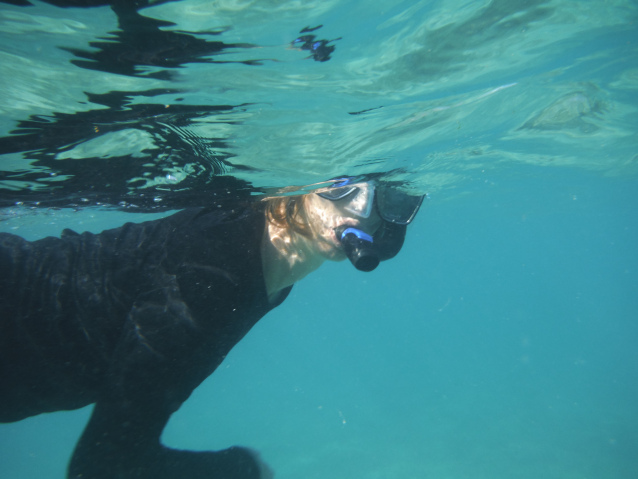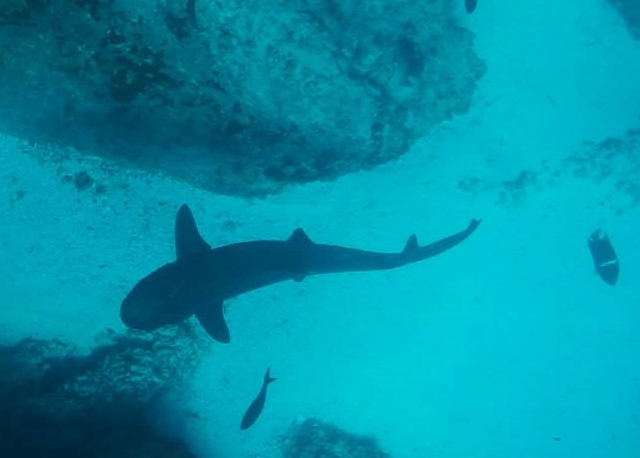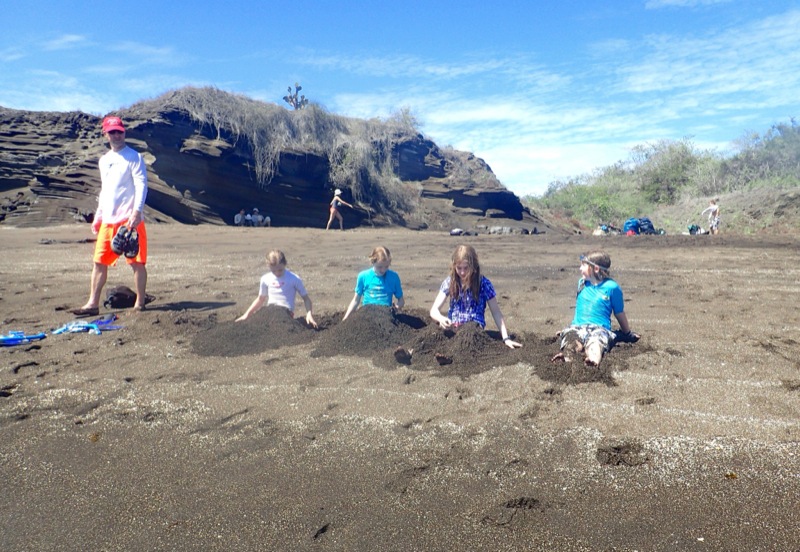AUTHOR admin

TRAVEL TIPS & EXTENSIONS
Your Guide to Snorkeling in the Galapagos

You can expect a different experience every time you put a snorkel mask and fins on in the Galapagos. We can’t promise that you will spot a white tip reef shark, or see a penguin dart past you, but as long as you give yourself ample time to explore underwater, you can hope to see the following wildlife swimming alongside you.
Guide to Snorkeling in the Galapagos Islands

Sea Lion
Snorkeling with sea lions is the highlight for almost every guest who travels with us. The way these animals flip around you in all directions is something you can look forward to on a Galapagos cruise. They are curious animals, so as you float by they will come inches away from your snorkel mask, blow bubbles in your face and joyfully do somersaults around you.

Sea Turtle
You will find the Galapagos Sea Turtle slowly swimming around seaweed beds, enjoying the sea grass and algae. They spend their time mainly in the water, but come on land to lay their eggs. Keep your eyes peeled, if you spot one there is usually a few more near by.
The sea turtle is listed as an endangered species. The Galapagos National Park closes sections of the beach during nesting season for these animals so the tourists do not disturb the area.
Marine Iguana
It’s fascinating to see iguanas which are typically land animals be great swimmers underwater. As you snorkel, you can watch them feed off of the algae and effortlessly dive up to 90 feet deep. Also, marine iguanas have long, sharp claws which give them the ability to hold onto rocks along the shore without being pulled away by the waves.
Sometimes their heads look white from the desalination process. They are unable to digest the salt water so they have developed glands that remove the salt through a shooting spray, that usually lands on their heads.

White Tip Reef Shark
Since sharks hunt at night and sleep during the day, it makes them less likely to spot while you are snorkeling. The White Tip Reef Shark is probably the most commonly seen by our guests in the Galapagos. These smaller sharks usually don’t exceed 5 feet and will most likely not pay any attention to you while you are swimming by, but can be exciting to share the water with.

Galapagos Penguin
You have to be quick because these small penguins will dart by you as they dive into the water. You can spot penguins throughout the islands, but the majority of the penguins are found on Fernandina and Isabela Islands to the West. The Galapagos penguins are the rarest of all penguin species and feed on the small fish near the shoreline. These unique animals are fun to snorkel with or watch preening on nearby rocks.
Flightless Cormorant
Over time, the Galapagos Flightless Cormorants adapted to the terrain and instead of flying, became efficient swimmers. These cormorants have dense body feathers to protect their bodies from the water and to improve buoyancy.
Since they don’t need to go far for their food and have no natural land-based predators they were able to adapt to hunt for their food by propelling through the water by quickly kicking their legs. The flightless cormorants are very fast and appear to hurry around looking for their food that typically consists of squid, octopus, eel and small fish.

Tropical Fish
You will be surrounded by large colorful fish when you snorkel in the Galapagos. Angel, Parrot, Unicorn and Hogfish are some of the favorites. Schools of Surgeon Fish and Butterfly fish will swim past you as you float in awe. You don’t need a trained eye, the fish are everywhere and they will continue on their way undisturbed by you presence.

Starfish
This is always a fun one to spot, especially for the kids. They typically have 5 arms and can grow up to 16 inches long. They don’t move fast, on average 6 inches a minute. You will see them in different shades of brown and sometimes a vibrant orange color in shallow water near coral reefs. You will know when you spot the Chocolate Chip Seastar, it looks just like your favorite cookie!
Golden and Spotted Eagle Ray
Golden Rays are named for their golden-colored tops and can be seen swimming alone or in large schools.
The spotted eagle rays have pointed heads, long tails and a longer wingspan than golden rays. Their most distinguishing feature is the white spots that cover their black tops. They are usually shy and avoid human interaction.
Before you go: Check out our tips for snorkeling in the Galapagos
Come prepared with our wildlife checklist so you can mark down what you saw and where.
What was your favorite wildlife sighting while you were snorkeling?

